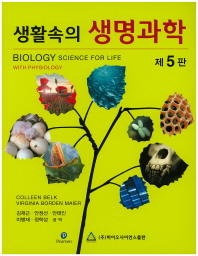 Home
Home
비교과 역량강화! 전공별 도서/논문/칼럼/영상 추천!
희망학과 맞춤형 생기부 관리를 위해 학과 별 유익한 자료를 추천해드립니다.
수행평가, 세부특기사항, 진로활동 등에 활용하여 풍성한 생기부를 만들 수 있습니다.
![]() 추천도서
추천 도서 더보기+
추천도서
추천 도서 더보기+
생활 속의 생명과학

저자Colleen Belk, Virginia Borden Maier
출판바이오사이언스
키워드생명과학, 자연과학, 대학교재, 화학, 유전, 진화
이 책은 해당 분야 전공자들을 위한 교재 겸 전문서이다.
![]() 추천영상
추천 영상 더보기+
추천영상
추천 영상 더보기+
쿠키의 화학(The chemistry of cookies)

크리에이터
영상링크https://www.ted.com/talks/stephanie_warren_the_chemistry_of_cookies
키워드화학, 생명, 박테리아, 음식, 식품,화학 반응
![]() 추천논문
추천 논문 더보기+
추천논문
추천 논문 더보기+
1.5/2.0℃ 지구온난화 시나리오 기반의 동아시아 기후변화 분석
저자심성보, 권상훈, 임윤진, 염성수, 변영화
키워드HAPPI 1.5/2.0, East Asia, climate change of mean and extreme, vulnerability, 동아시아, 평균과 극한의 기후 변화
This study first investigates the changes of the mean and extreme temperatures and precipitation in East Asia (EA) under stabilized 1.5oC and 2oC warming conditions above preindustrial levels provided by HAPPI project. Here, five model with 925 members for 10-year historical period (2006~2015) and 1.5/2.0oC future warming scenarios (2091~2100) have been used and monthly based data have been analyzed. The results show that the spatial distribution fields over EA and domain averaged variables in HAPPI 1.5/2.0oC hindcast simulations are comparable to observations. It is found that the magnitude of mean temperature warming in EA and Korea is similar to the global mean, but for extreme temperatures local higher warming trend for minimum temperature is significant. In terms of precipitation, most subregion in EA will see more increased precipitation under 1.5/2.0oC warming compared to the global mean. These attribute for probability density function of analyzed variables to get wider with increasing mean values in 1.5/2.0oC warming conditions. As the result of vulnerability of 0.5oC additional warming from 1.5 to 2.0oC, 0.5oC additional warming contributes to the increases in extreme events and especially the impact over South Korea is slightly larger than EA. Therefore, limiting global warming by 0.5oC can help avoid the increases in extreme temperature and precipitation events in terms of intensity and frequency. This study first investigates the changes of the mean and extreme temperatures and precipitation in East Asia (EA) under stabilized 1.5℃ and 2℃ warming conditions above preindustrial levels provided by HAPPI project. Here, five model with 925 members for 10-year historical period (2006~2015) and 1.5/2.0℃ future warming scenarios (2091~2100) have been used and monthly based data have been analyzed. The results show that the spatial distribution fields over EA and domain averaged variables in HAPPI 1.5/2.0℃ hindcast simulations are comparable to observations. It is found that the magnitude of mean temperature warming in EA and Korea is similar to the global mean, but for extreme temperatures local higher warming trend for minimum temperature is significant. In terms of precipitation, most subregion in EA will see more increased precipitation under 1.5/2.0oC warming compared to the global mean. These attribute for probability density function of analyzed variables to get wider with increasing mean values in 1.5/2.0℃ warming conditions. As the result of vulnerability of 0.5℃ additional warming from 1.5 to 2.0℃, 0.5℃ additional warming contributes to the increases in extreme events and especially the impact over South Korea is slightly larger than EA. Therefore, limiting global warming by 0.5℃ can help avoid the increases in extreme temperature and precipitation events in terms of intensity and frequency.
![]() 추천칼럼
추천 칼럼 더보기+
추천칼럼
추천 칼럼 더보기+
생명공학자들의 윤리
링크https://www.hankyung.com/opinion/article/2019010660941
키워드생명윤리, 유전자 편집 기술, AIDS, CCR5, 생명공학, 진화